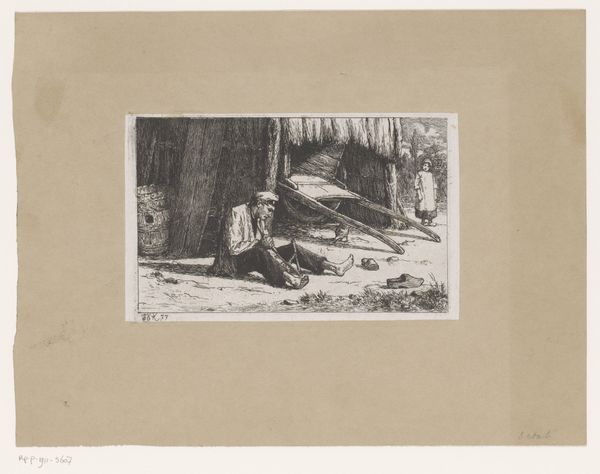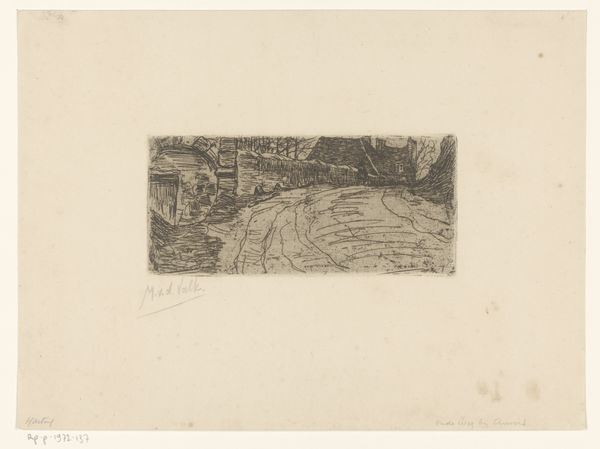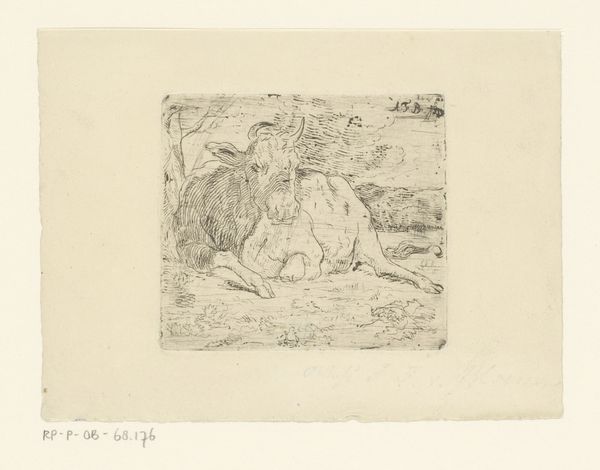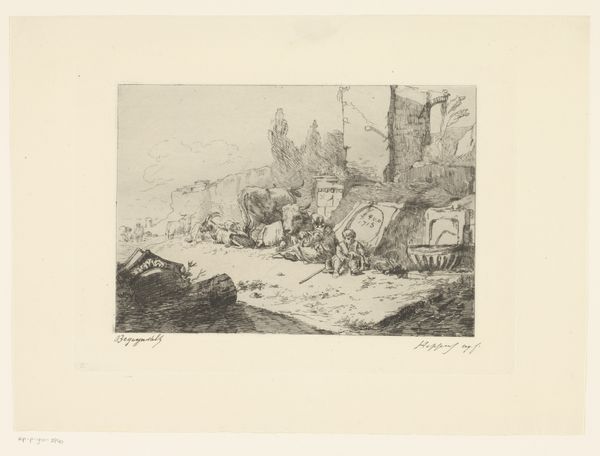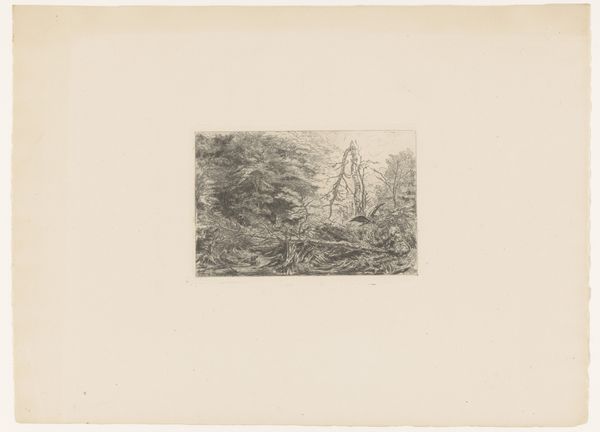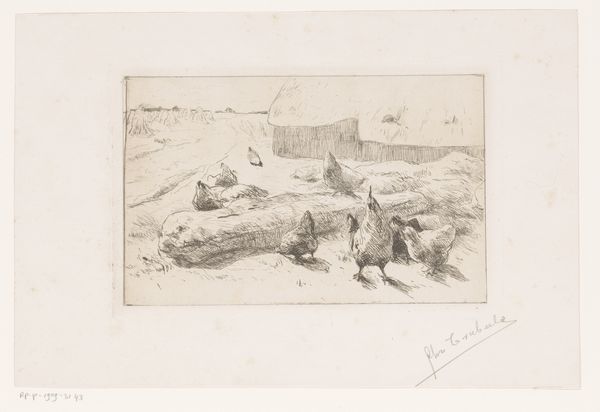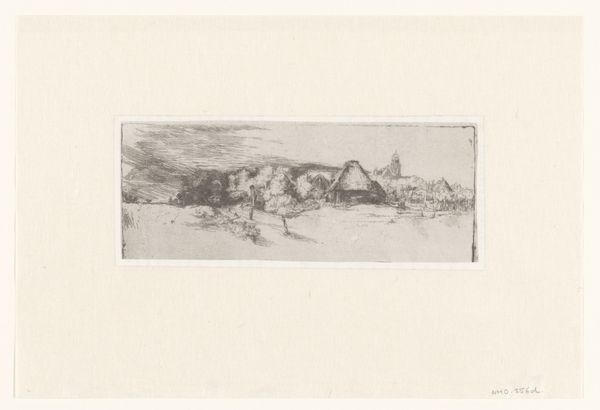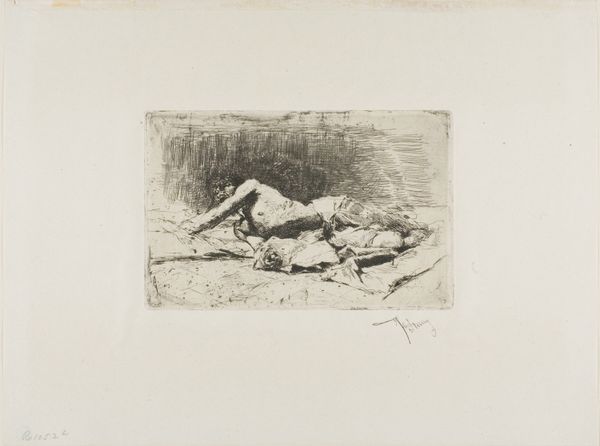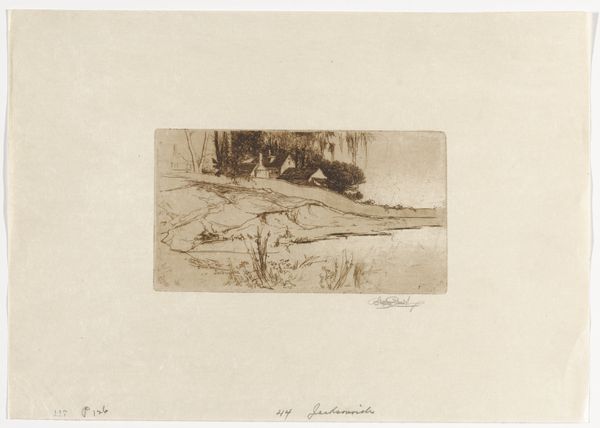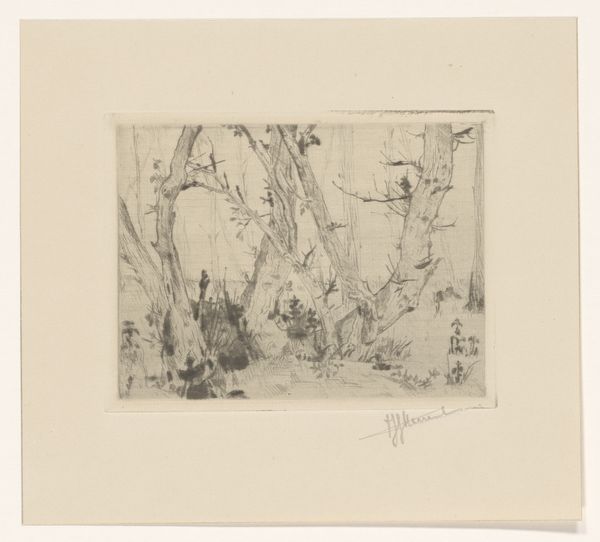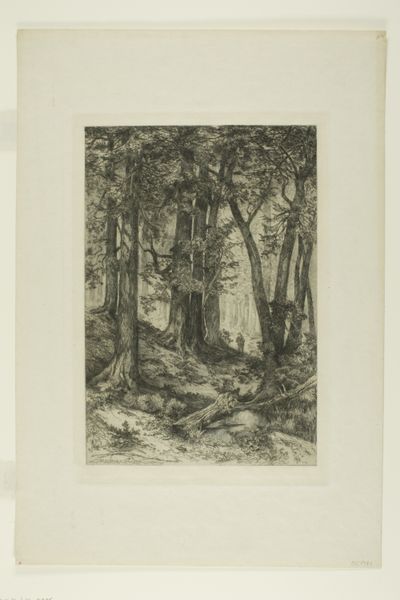
drawing, print, etching, paper
#
drawing
#
16_19th-century
# print
#
etching
#
landscape
#
paper
#
genre-painting
#
realism
Dimensions: height 118 mm, width 179 mm
Copyright: Rijks Museum: Open Domain
Editor: This is "Schuur waarvoor een boer op de grond en een meisje op de achtergrond" by Frans Van Kuyck, created in 1877. It's an etching on paper, depicting a farmer outside a barn with a girl in the background. It feels quite grounded, capturing a very specific moment in rural life. What stands out to you most when you look at it? Curator: I’m immediately drawn to the raw materiality of this etching. The roughness of the lines, the apparent ease with which they depict the farmer’s worn clothes, the texture of the barn – it all speaks to the artist’s interest in capturing the immediate physical reality of labor. It challenges the romantic idealization of rural life. Do you think that the inclusion of the child affects that reading? Editor: I think it does, almost highlighting the continuity of this type of labor. I do agree with your points, although I would never look into an artwork through that lens! So the materials are what help shape meaning for you, that makes sense. Curator: Exactly. Van Kuyck’s choice of etching as a medium – think about the process, the biting of the metal, the labor involved in printing – mirrors the labor he's depicting. He could have chosen another printing process. But consider what it means that he chose etching and deployed it in the realist style. Also the limited tonal range and relative reproducibility inherent to this type of print facilitates its spread. Do you have some other observations on the social and economic context surrounding this work and Van Kuyck's choices? Editor: Hmmm, so maybe the print makes this artwork more democratic, accessible. I noticed that it is so different compared to photography from that period. Curator: Precisely. Seeing it not as just an image, but as a material object produced within a specific economic and social system opens it up to a whole new layer of interpretation, especially considering who it may have been made for, or who consumed prints. Editor: I see that it adds depth. It’s more than just looking; it's about understanding how it was made and circulated. Curator: Indeed. By examining the materials and the production process, we gain insights into the social and economic forces that shaped not just the image, but its very existence.
Comments
No comments
Be the first to comment and join the conversation on the ultimate creative platform.

